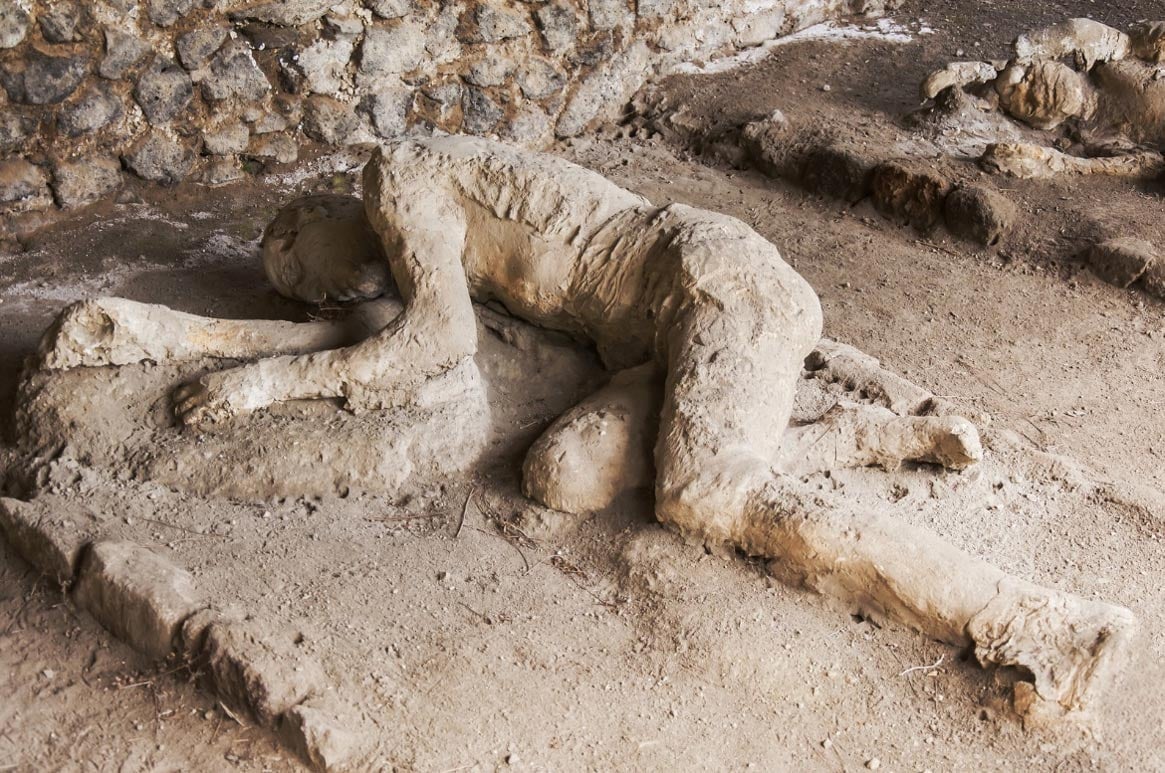
660-pound flying stone killed a man in Pompeii ("A formidable stone block, perhaps a door jamb")
Posted on 06/01/2018 5:33:41 AM PDT by ETL
The discovery of a skeleton at the famous Pompeii archaeological site in Italy has revealed the gruesome fate that befell one of the ancient victims of the Mount Vesuvius eruption.
A new excavation at the site unearthed the skeleton of a man who was crushed by a large block of stone while attempting to flee the eruption in 79 A.D.
In a Facebook post on Tuesday, officials explained that the man’s body had been “hurled back” by the force of the volcano’s pyroclastic flow — a mix of hot lava fragments, ash pumice and volcanic ash.
“A formidable stone block (perhaps a door jamb), violently thrown by the volcanic cloud, collided with his upper body, crushing the highest part of the thorax and yet-to-be-identified head, which lie at a lower height of the lower limbs, and probably under the stone block,” they wrote.
-snip-
Vesuvius, which is the only active volcano on mainland Europe, experienced its last serious eruption in 1944, according to LiveScience.
While no fatalities have yet been recorded in the ongoing Kilauea eruption in Hawaii a man on the Big Island was recently hit by a flying piece of lava and said the molten rock nearly sheared his leg in half.
(Excerpt) Read more at foxnews.com ...







My apologies if you already posted this story.

Then I bet he was dead before the rock hit him.
"But during the surge "temperatures outdoors—and indoors—rose up to 300°C [570°F] and more, enough to kill hundreds of people in a fraction of a second," said Mastrolorenzo, who led the study, published in the June 2010 issue of the journal PLoS ONE." link
The pyroclastic flow may come afterwards.
I think Pompeii was hit by several pyroclastic surges during that eruption, but the article said researchers think one of those surges was responsible for throwing the rock.
Was he just a stone’s throw away from the volcano?
It has, but we can never have too many. :^)
http://www.freerepublic.com/focus/chat/3658985/posts
Pompeii was out of range of the pyroclastic flows, and was mostly just buried in circa ten meters depth of ash.
Rocks as seen in the photo were however hurled from the caldera, and a steady hail of pebble struck every structure and anyone or anything moving on the streets.
Just to make the whole day a crap sandwich, there was also a wave or two of poison gases that rolled down the slopes of Vesuvius.
Herculaneum was on the slopes of the volcano and buried under pyroclastic flows. This had the effect of preserving many or perhaps most of the upper storeys of structures in that town. One hazard encountered by the past couple hundred years’ worth of excavators has been that the poisonous gases have been preserved in tiny pores inside the pyroclastic flows after they cooled and hardened into stone.
http://www.freerepublic.com/focus/chat/3659159/posts
http://www.freerepublic.com/tag/pompeii/index
Thanks ETL. Another article about a recent finding.
Well, done!
Y’know, someone sent this link the other day, and I can’t find it in mny old mail. Anyway, posting it in a couple of old topics that are related.
The impact of pyroclastic density currents duration on humans: the case of the AD 79 eruption of Vesuvius
https://www.nature.com/articles/s41598-021-84456-7
Disclaimer: Opinions posted on Free Republic are those of the individual posters and do not necessarily represent the opinion of Free Republic or its management. All materials posted herein are protected by copyright law and the exemption for fair use of copyrighted works.